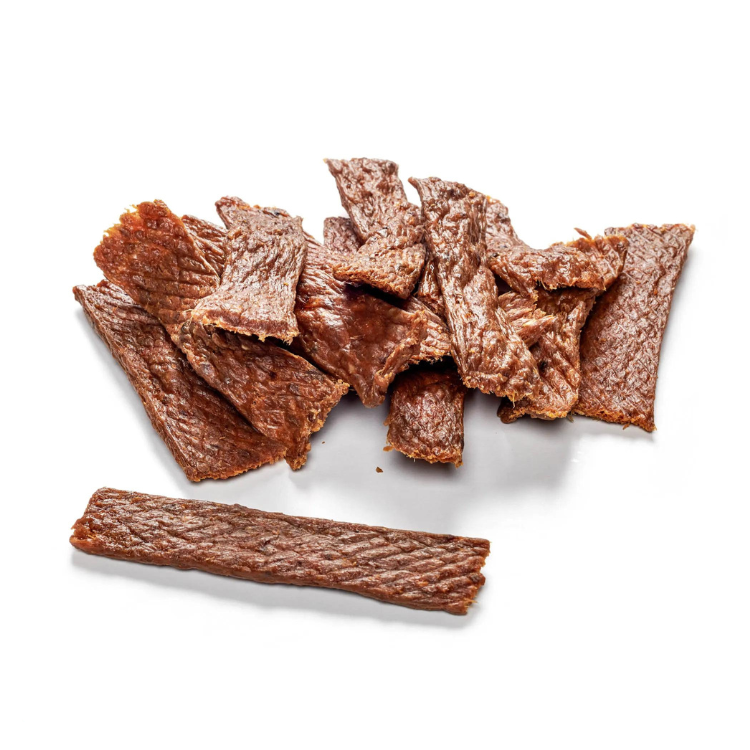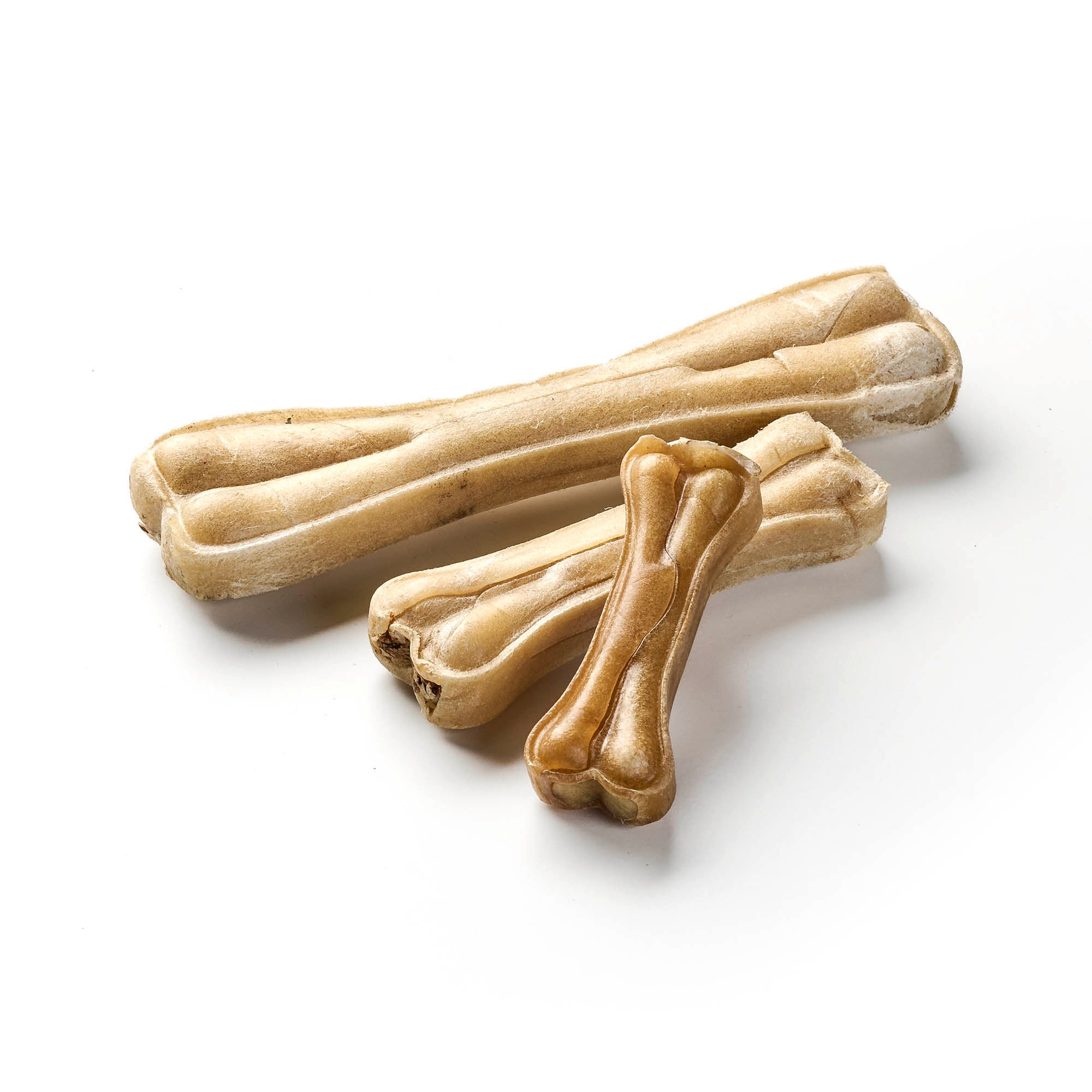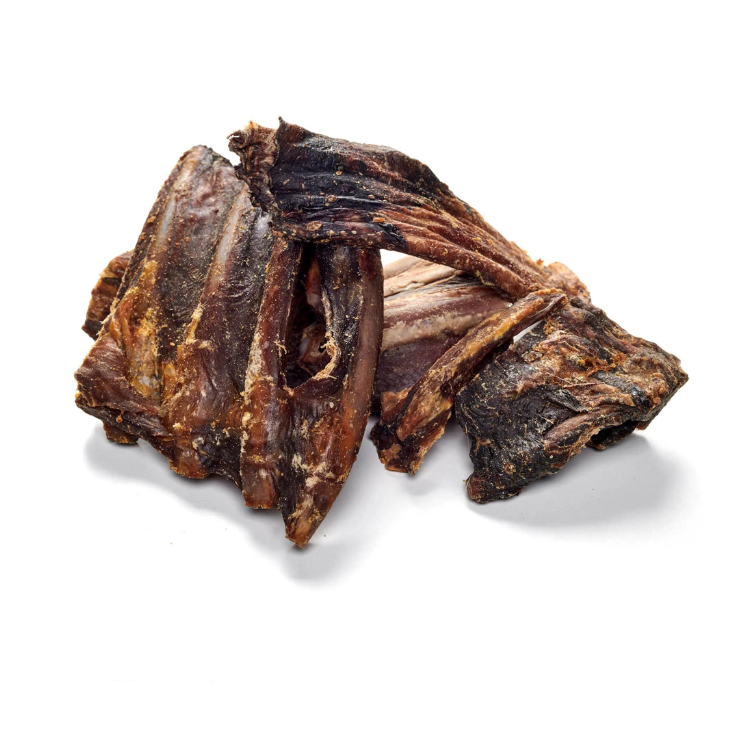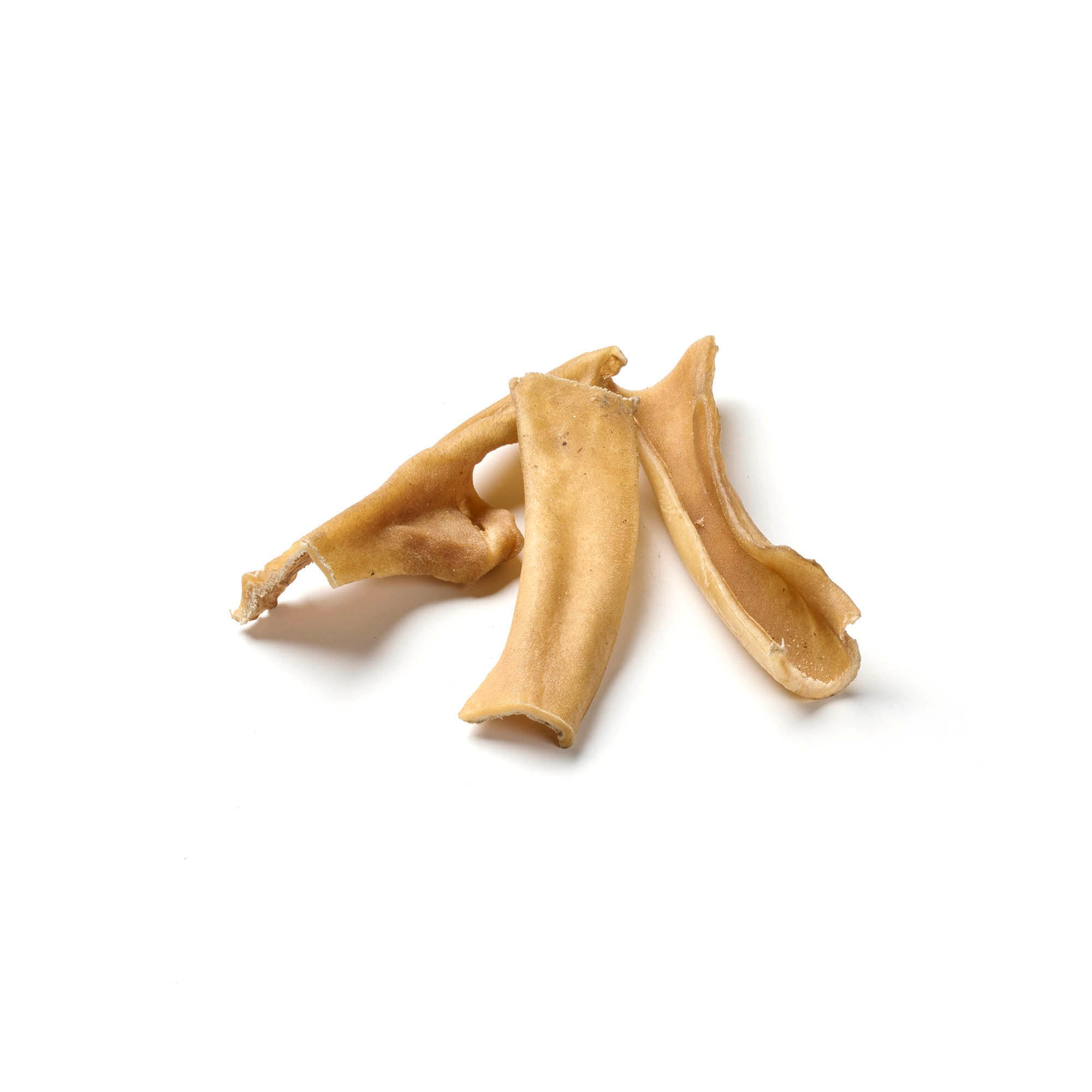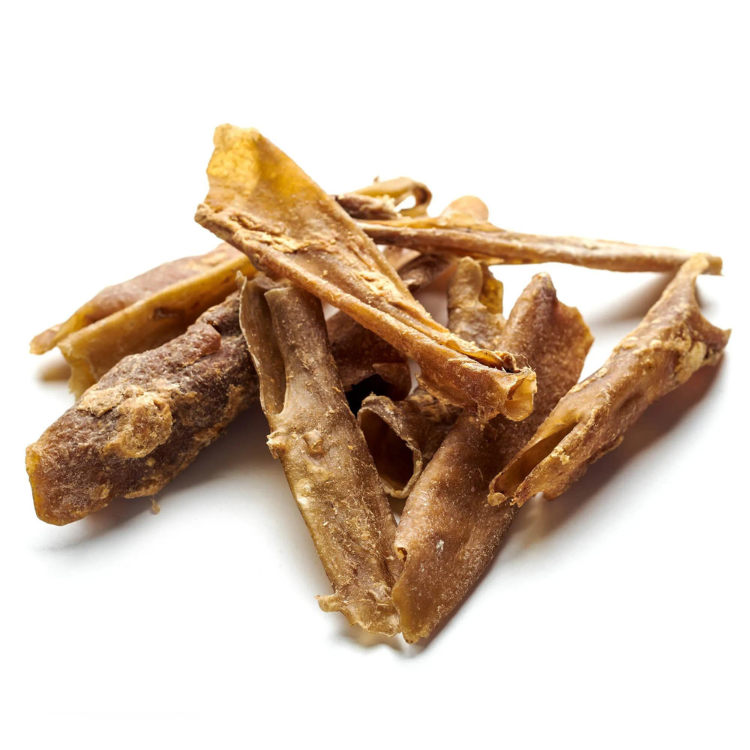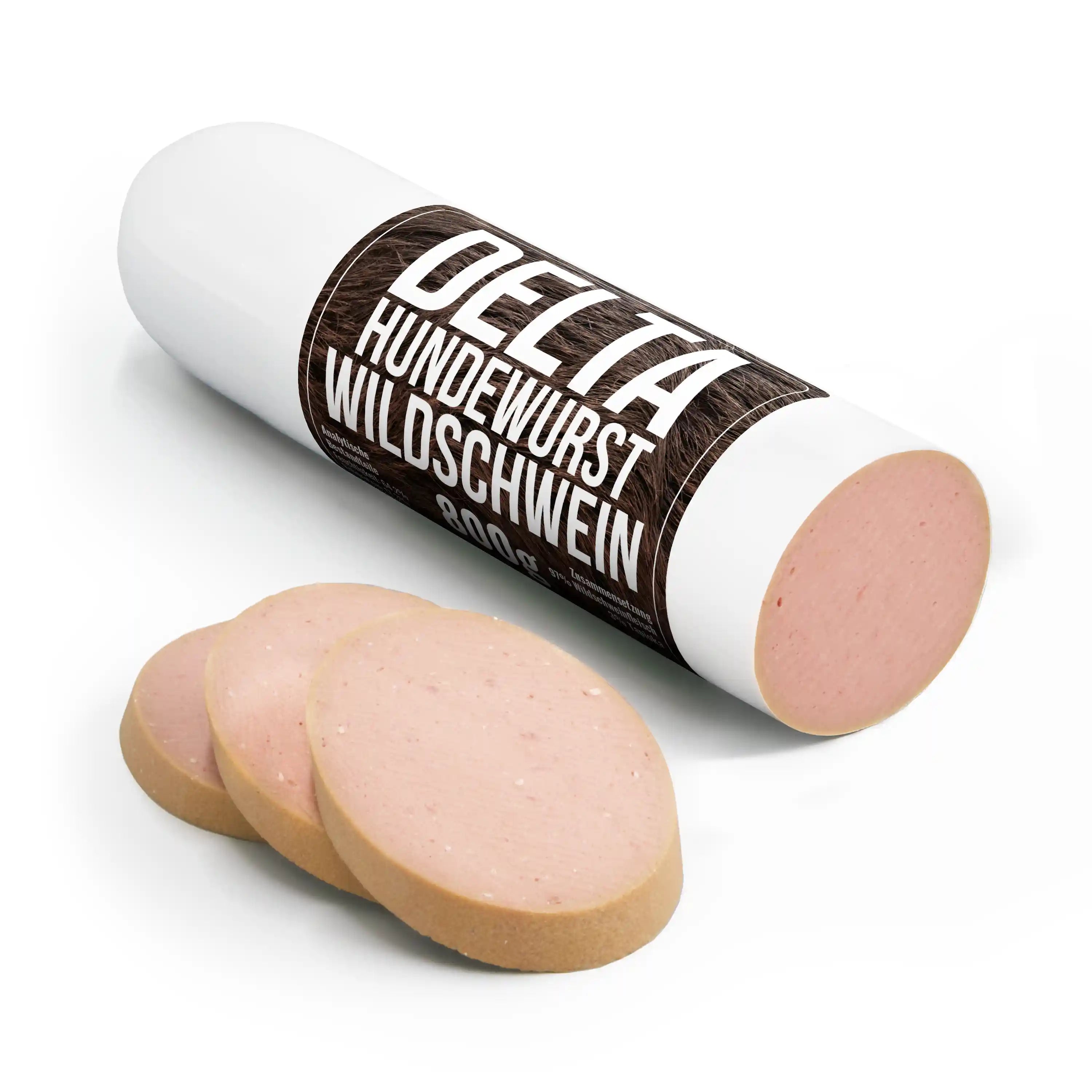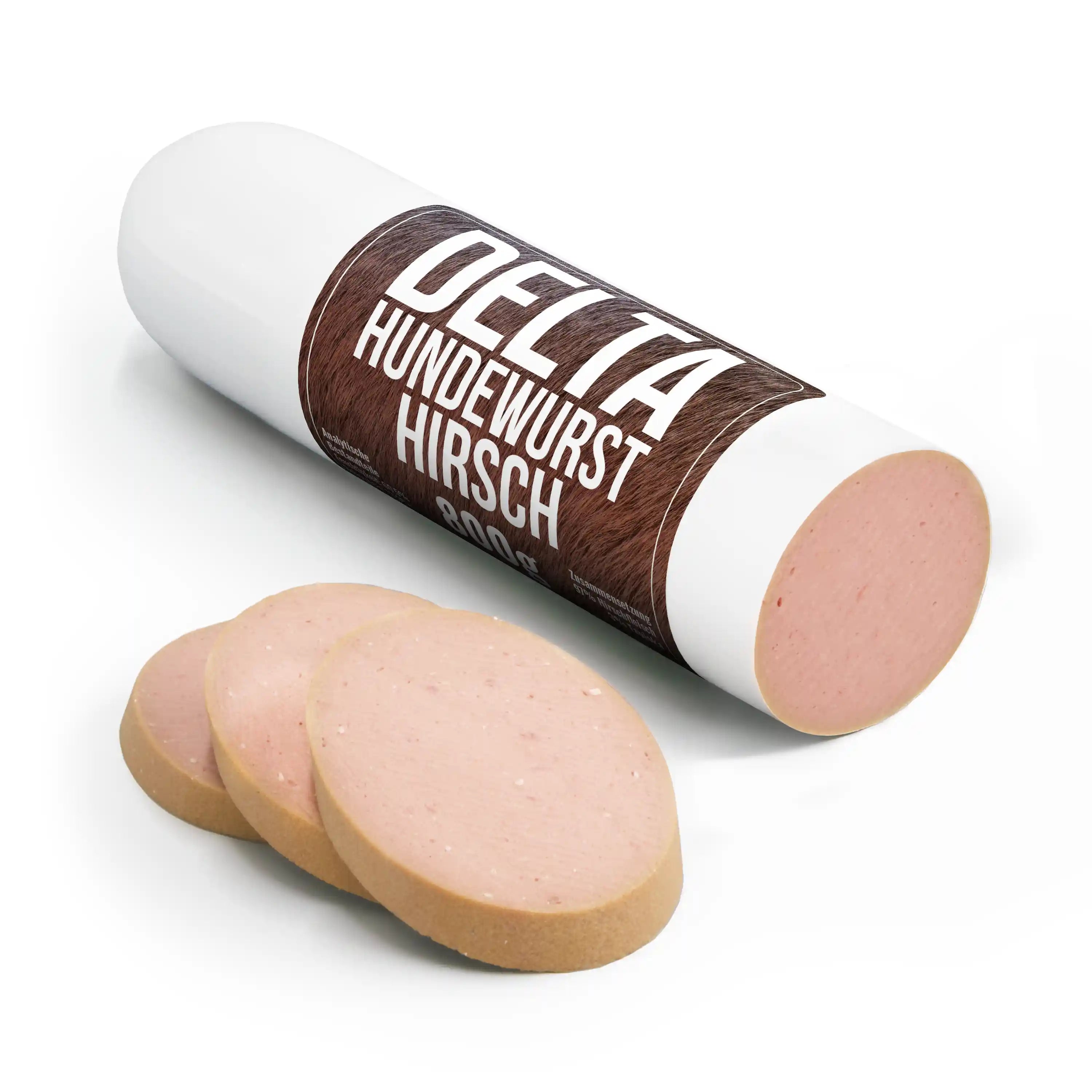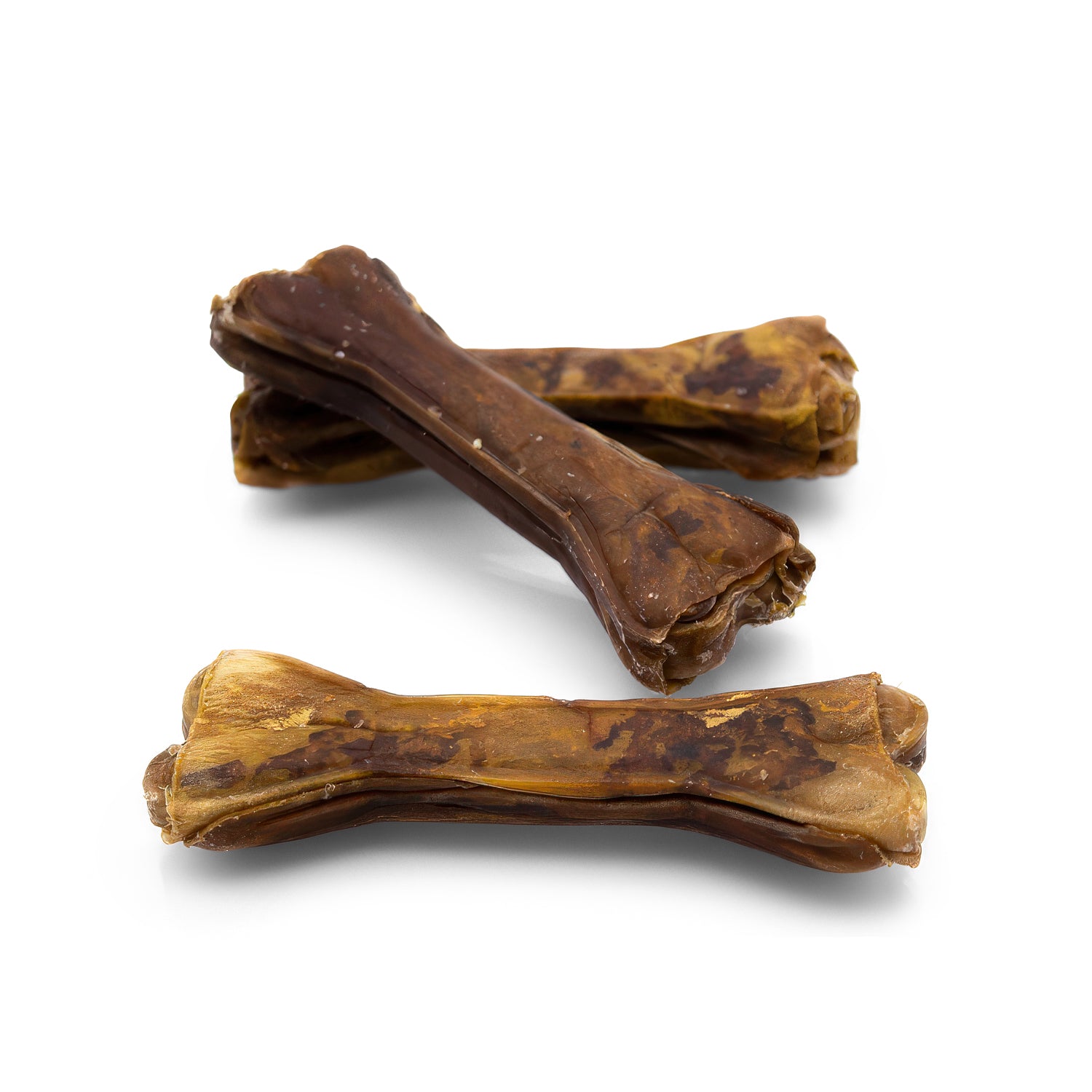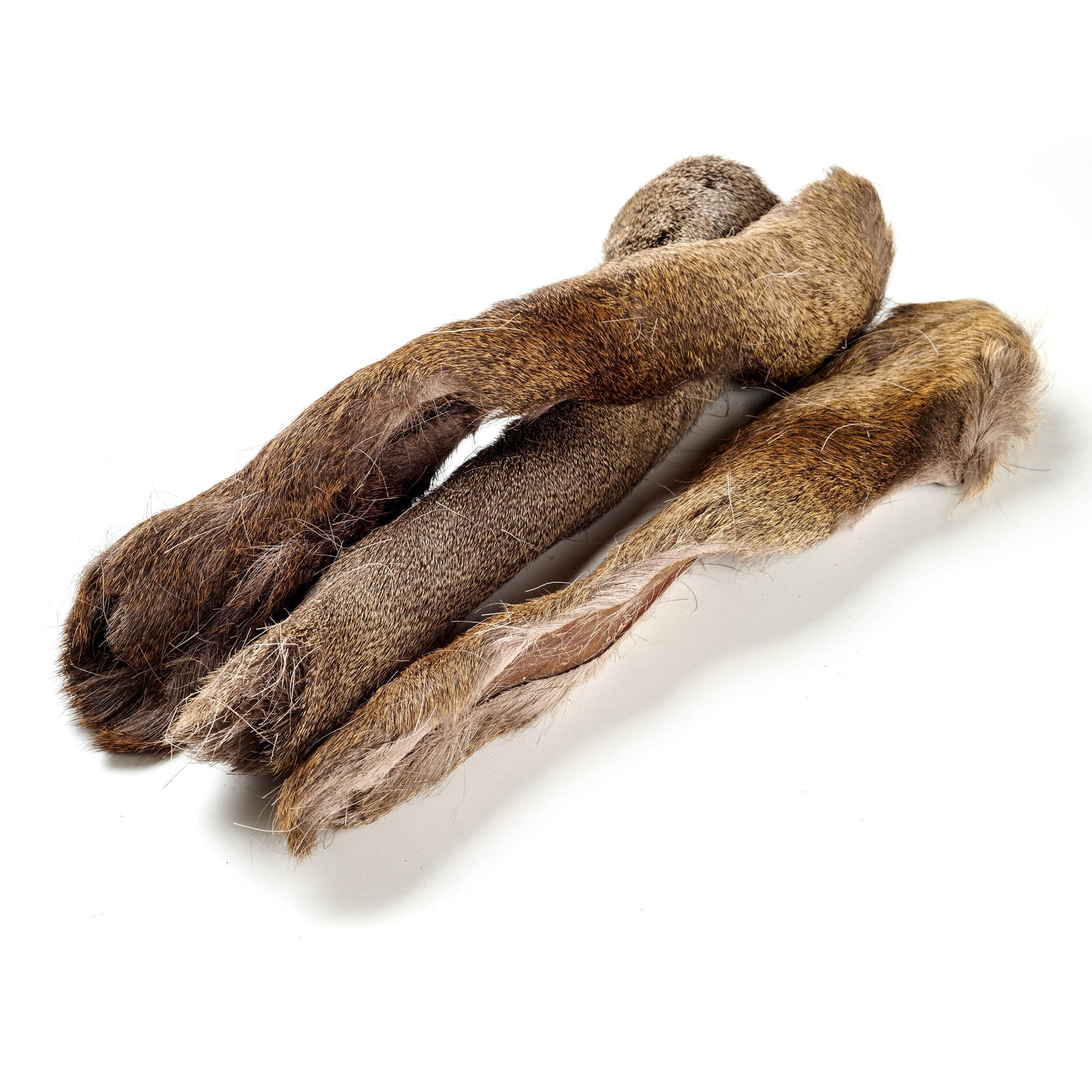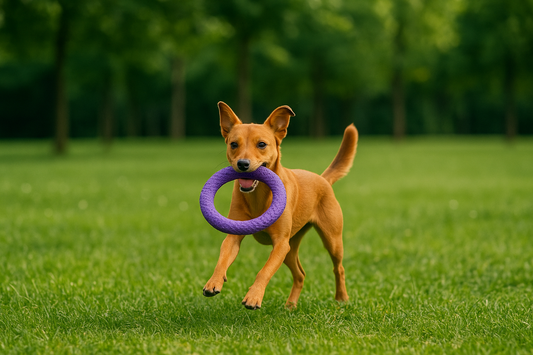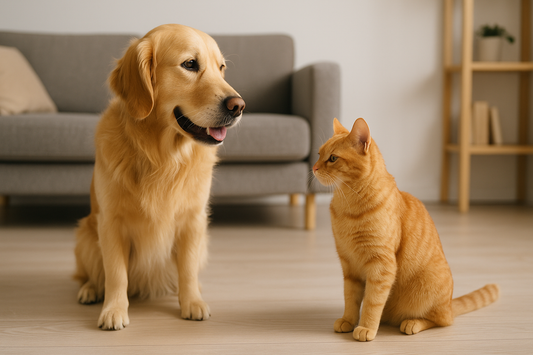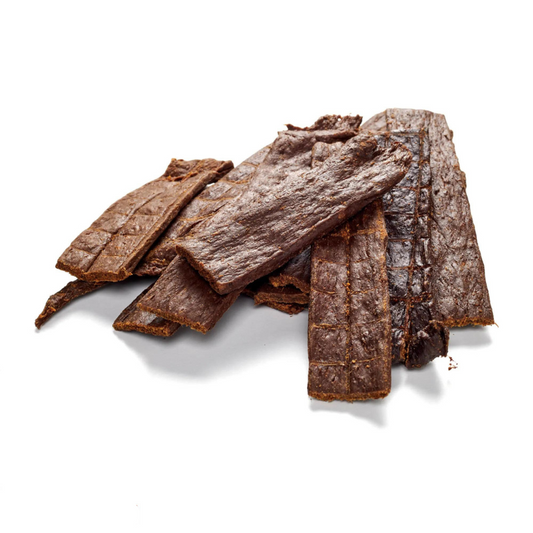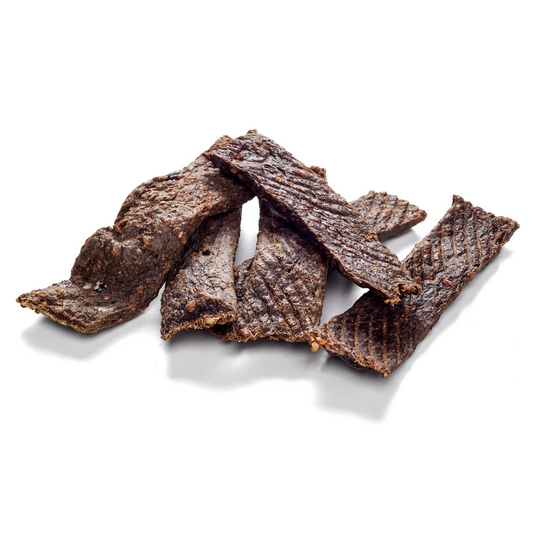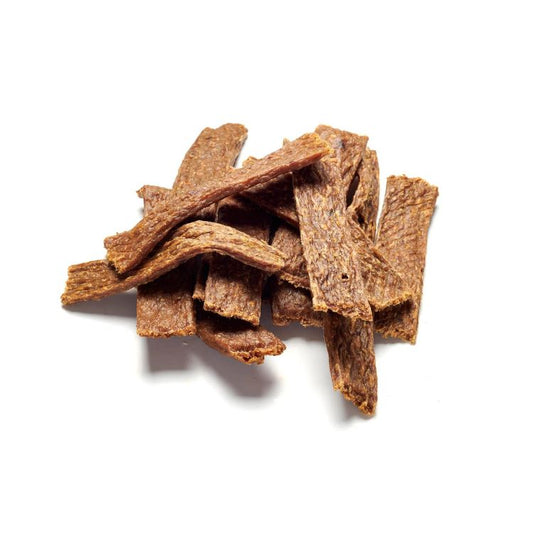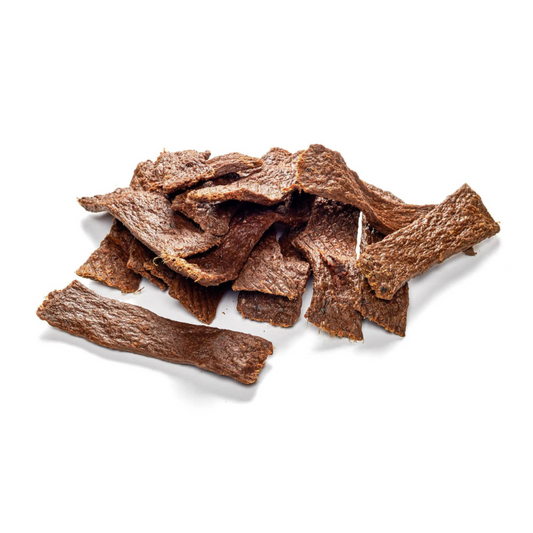
Anti-poison bait training: Safe on the road with your best friend
Share
A beautiful afternoon in the park, the sun is shining and your favourite four-legged friend is sniffing around curiously as he discovers the world. The birds are chirping, children are playing and everything seems perfect. Suddenly the dog stops, nose deep in the grass, and starts sniffing something suspicious. A slight feeling of unease creeps in because you never know exactly what is hiding there.
Content: Anti-poison bait training: Safe on the road with your best friend
- What is poison bait - and why do people do it?
- Why is anti-poison bait training important?
- The basics of anti-poison bait training
- Tips for successful training
- Everyday tips for prevention
- Conclusion
Discover the range of dog snacks in our store!
The thought of all the possible dangers makes your heart beat faster. The park that seemed so peaceful just a moment ago suddenly becomes a potential danger zone. There could be something hidden between the colorful flowers and the freshly mown grass that could harm your beloved four-legged friend. In such moments, you want nothing more than a safe method to protect your dog from these invisible threats.
As the dog continues to sniff and explore, the question arises: How can you protect him from such dangers? Targeted training could be the solution. But how do you teach a curious dog to ignore potentially dangerous objects?
What is poison bait - and why do people do it?
Poison bait is a perfidious device that is deliberately laid out by people to poison animals. These baits are often disguised as treats and can take the form of pieces of meat, sausages, bread or biscuits laced with dangerous substances such as rat poison, slug pellets or razor blades. The motives behind laying out poison bait are frighteningly diverse.
Some people act out of hatred or dislike for dogs and their owners. Others are bothered or afraid by dogs running around or barking and see poison bait as a solution to eliminate the "problem". There are also cases where poison bait is used as an act of revenge against neighbors. These acts show a deep recklessness and a lack of empathy.
Why is anti-poison bait training important?
Dogs are naturally curious and like to explore their surroundings with their nose and mouth. This curiosity is an essential part of their nature and makes walks an exciting adventure for them. But it is precisely this curiosity that can be their downfall if they come across dangerous bait - or simply other animals' droppings .
The idea that their loyal companion could be injured or even killed by an invisible danger is unbearable for any dog owner. The symptoms of poisoning can vary, from vomiting and diarrhea to cramps and shortness of breath. There is often little time to react, and the trip to the vet becomes a race against time. In such moments, every second counts, and the panic and helplessness you feel can hardly be put into words.
Poison baits can lurk anywhere - in the park, on the side of the road, even in your own garden. They are often insidiously camouflaged so that they appear harmless at first glance. A piece of meat, a sausage or a biscuit that has been laced with poisonous substances look like treats that every dog would happily eat. This dangerous nature of the baits makes them so insidious and difficult to detect.
The basics of anti-poison bait training
Anti-poison bait training is based on basic commands - your four-legged friend should definitely know these. It is important to build up the training gradually and to reward the dog consistently when it reacts correctly. A clear and unambiguous signal is the first step in training. "No", "Off" or a similar command is taught to the dog, which it associates with not picking up the bait.
This signal should always be used consistently and in the same situation. At the beginning of dog training, the command can be introduced in a quiet and distraction-free environment. Here the dog can concentrate better and learn the new signal. Over time and as training progresses, the command is also practiced in environments with more distractions.
Rewards are essential in training. As soon as the dog leaves the food on command, he is immediately praised and rewarded with a treat that is given from the hand. This reinforces the desired behavior and motivates the dog to follow the commands. It is important that the rewards are varied and particularly attractive.
Training should not only take place in a controlled environment, but also be integrated into real walks. Food is deliberately placed along the path to reinforce the learned commands under distraction. These exercises should be carried out in different environments to prepare the dog for different situations.
The realistic training situations help the dog to apply what it has learned in unknown and potentially dangerous environments. Patience is required here, because the dog must first learn to follow commands even when distracted.
Of course, these exercises are much easier to do with two people than alone. So if you can motivate friends or family members, training with your four-legged friend should be easier and more fun!
Tips for successful training
Successful anti-poison bait training requires more than just the basics. Here are some additional tips to make training effective and sustainable.
Patience and consistency
Training requires patience and consistency. Every dog learns at its own pace, so it is important not to lose patience and to repeat the training regularly. Consistency is the key to success. Even small progress should be praised and rewarded to motivate the dog. Tasty and healthy rewards can help encourage the dog and make training a positive experience.
Minimize distractions
Pamper your dog with our chew products!
At the beginning of training, distractions should be minimized. In a quiet environment, the dog can concentrate better and learn the new commands. As training progresses, distractions can be gradually increased. The more the dog learns, the more complex the training situations can be. This optimally prepares the dog for various everyday situations in which it should apply what it has learned. It can be helpful to always have a few tasty training snacks on hand during training to reward the dog for its progress.
Steps of Anti-Poison Bait Training
Anti-bait training is about teaching your dog to only eat on command and to avoid anything unfamiliar. Here are steps on how to set up the training:
- Establish a basic command: Start with a simple command like "No" or "Leave that!" that you want to use to stop your dog from picking something up. Make sure your dog understands this command in a controlled environment without distractions.
- Controlled exposure: Place various objects, including pieces of food, in your training environment. Lead your dog to these objects on a leash. When he tries to take the food, give the command "No" or "Leave that!" and gently pull back on the leash WITHOUT jerking the leash!
- Reward for obedience: When your dog responds to the command and avoids the food or object, immediately reward him with one of his favorite treats from your fanny pack.
- Increasing distractions: Once your dog reliably performs the behavior in a quiet environment, gradually increase distractions by choosing places with more environmental stimuli, such as parks or busy streets.
- Long-term motivation and reinforcement: Even if your dog follows the command reliably, you should refresh the training regularly and practice it again and again, especially in new or unpredictable situations, in order to consolidate the learning results.
The best snacks for training
Of course, choosing the right treats plays a crucial role in anti-poison bait training. These specialty chews are both tasty and functional to ensure your dog stays motivated while also staying healthy. Here are some excellent options:
- Soft meat cubes: tender and easy-to-chew snacks that are particularly suitable for older dogs or those with sensitive teeth. Soft meat cubes offer a delicious taste and are a pleasant reward.
- Mini meat cubes: Small but tasty treats, perfect for small dogs and puppies. Mini meat cubes are ideal as reward snacks and are easy to portion.
- Meat cubes: Juicy and delicious reward snacks for dogs of all sizes. Meat cubes offer an intense flavor and are ideal for training or as a special treat.
- Softies: Soft and firm treats for dogs. Softies are easy to digest and offer pleasant chewing fun. Ideal as reward snacks or for dogs who prefer tender textures.
- Meat strips: Juicy and easy-to-chew treats that are particularly suitable for older dogs or those with sensitive teeth. Meat strips pamper the palate and serve as an enjoyable reward.
- Training snacks: Small, soft and tasty treats that are ideal for training with your dog - which is why we called them training snacks . They are easy to portion and are happily accepted by dogs as a reward.
These snacks provide excellent support for anti-poison bait training by providing quick and tasty rewards for the dog's correct behavior. However, it is also possible to use effective training methods that do not require food rewards.
One such method is clicker training for dogs , which uses a clicker to mark the exact moment of the desired behavior, followed by a reward that does not necessarily have to be edible.
This type of training can help promote clear communication between dog and trainer and motivate the dog to learn desired behaviors through positive reinforcement without direct feeding. This not only keeps training varied, but also health-conscious and can create a close bond between you and your dog.
Everyday tips for prevention
In addition to targeted training, there are some everyday tips that can help minimize the danger and protect your dog from poison bait. These measures are easy to implement and can significantly reduce the risk.
Keep your attention
Always keep a watchful eye on your dog, especially in unfamiliar areas. Even a brief moment of inattention can be enough for your dog to pick up something dangerous. During the walk, your dog should remain in your field of vision at all times, especially when he is looking around in tufts of grass or under bushes. An attentive dog owner can react more quickly if the dog finds and picks up something suspicious.
Choose fixed paths
Familiar walking routes are safer because you know where there are potential dangers. In familiar areas, you can better assess and avoid potential risks. Regular routes have the advantage that changes are immediately apparent. It is helpful to use tried and tested routes for walks where no problems have occurred in the past. When exploring new routes, extra caution is required.
avoid trash
Leftover food and waste can also be a danger in the garden at home. Regular cleaning helps to minimize risks. Even when you are out and about, you should make sure that your dog does not have access to waste. Waste bins are particularly attractive to curious dogs and should be avoided. A clean garden and regular checks of the surrounding area help to reduce the risk of poison bait. It is also a good idea to get your dog used to not sniffing garbage or food scraps by consistently preventing this behavior.
Further preventive measures
In addition to the tips above, there are other measures that can increase the dog's protection. This includes wearing a muzzle, especially in areas known for poison bait. It's a tough measure, but a well-fitting muzzle prevents the dog from picking up anything from the ground and, in case of doubt, can save lives.
It can also be helpful to communicate with other dog owners in the area. Information about suspicious finds or known danger zones should be shared to raise awareness and draw attention to potential dangers. Collective action and mutual support can increase safety for all dogs in the neighborhood.
Another useful tool is the use of special apps or platforms where warnings about poison bait can be reported and accessed. These services provide up-to-date information and help avoid dangerous areas.
By combining these everyday tips with thorough anti-poison bait training, the risk can be reduced considerably. This makes everyday life with your beloved four-legged friend more carefree and safer again.
Conclusion
Well-conducted anti-poison bait training protects your beloved four-legged friend and ensures carefree walks. Patience, consistency and the right tools are crucial. Rewards play a central role in the learning process and encourage the dog's motivation. With the right approach and the right products from snack4pet.com, training can be made not only effective, but also fun. This makes every walk a safe and relaxed experience.
Delicious chews for your faithful companion now available!

